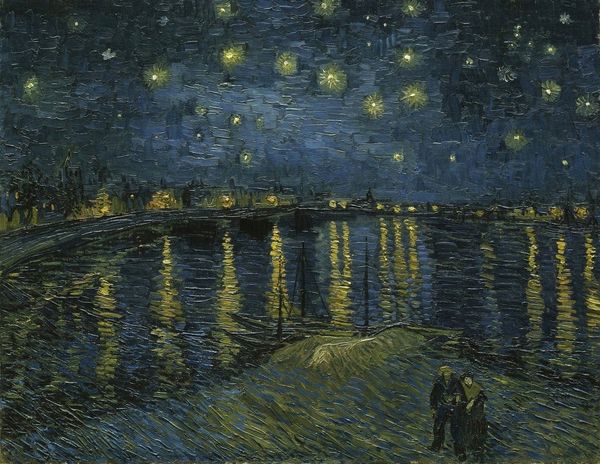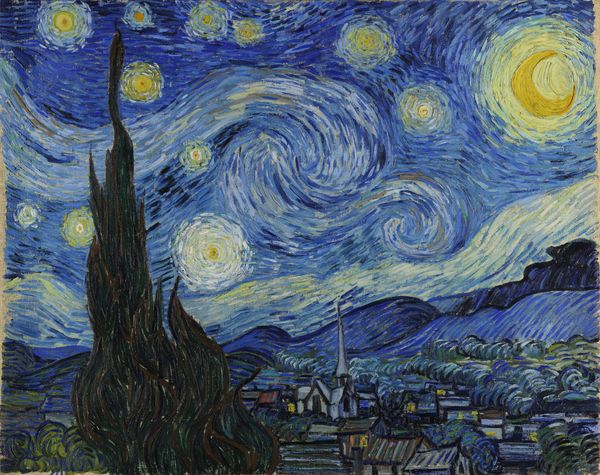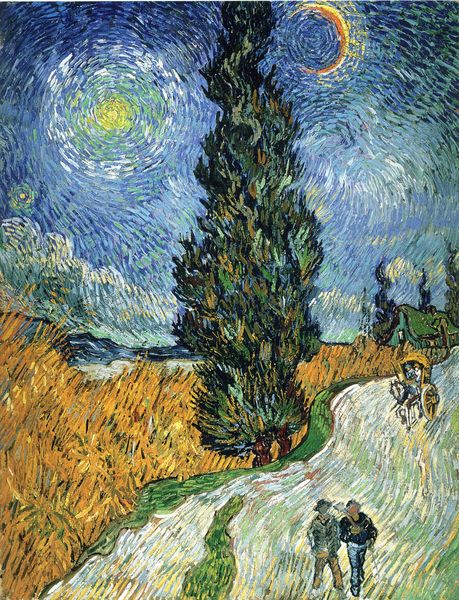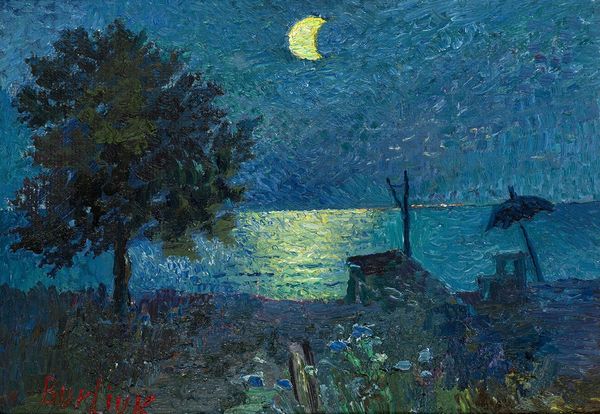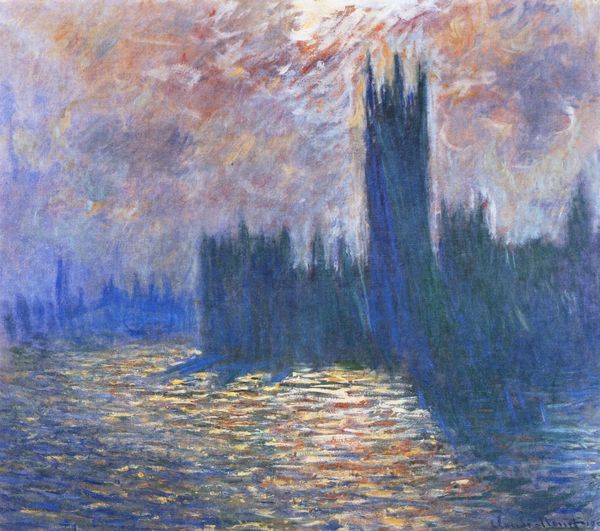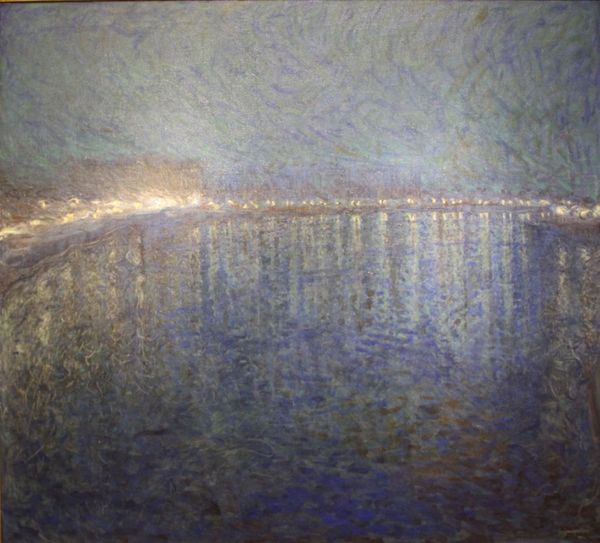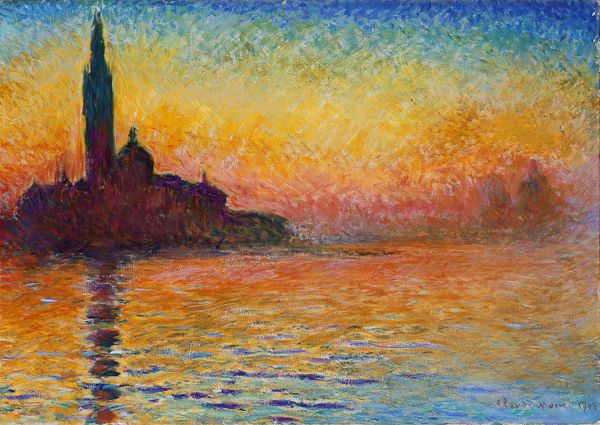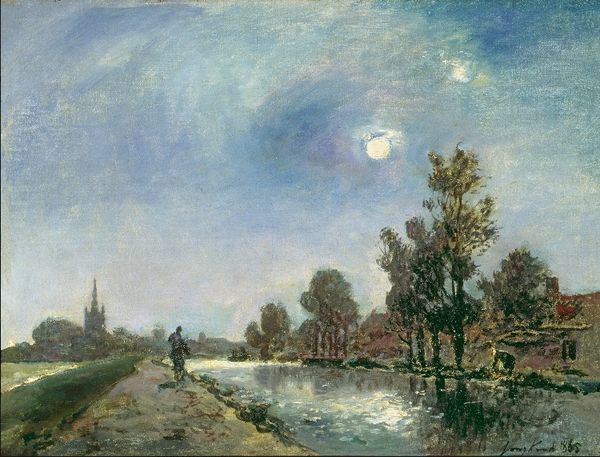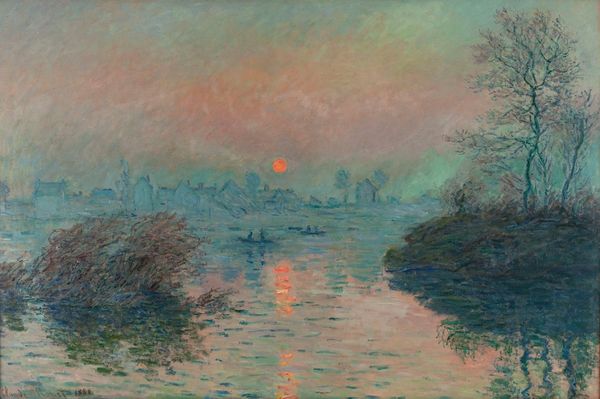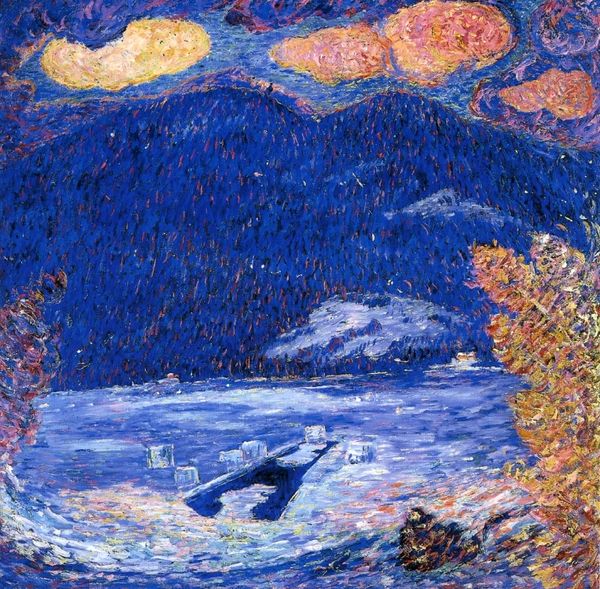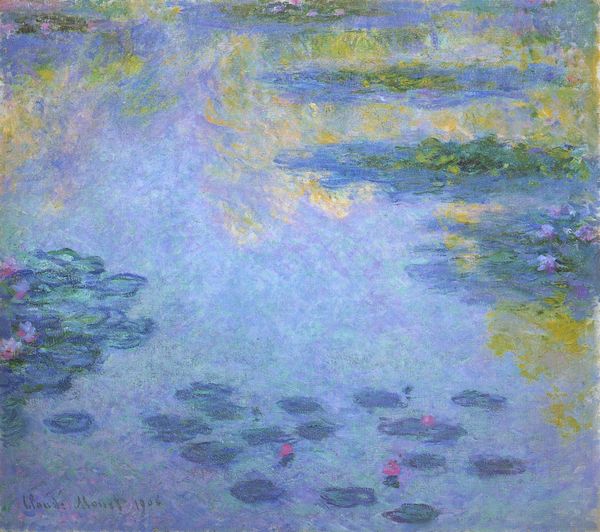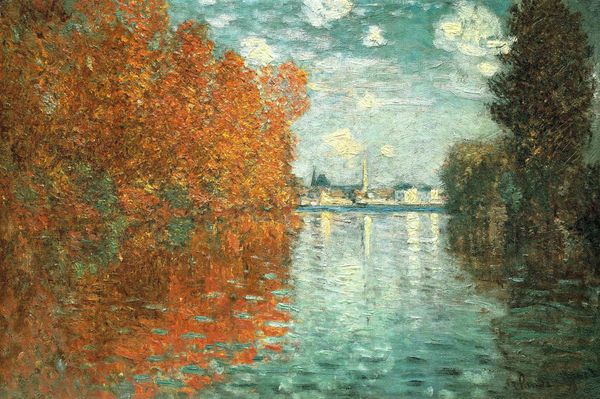
painting, plein-air, oil-paint, impasto
#
night
#
sky
#
narrative-art
#
painting
#
impressionism
#
plein-air
#
oil-paint
#
landscape
#
river
#
impressionist landscape
#
impasto
#
geometric
#
water
#
cityscape
#
post-impressionism
Dimensions: 72.5 x 92 cm
Copyright: Public domain
Editor: Here we have Van Gogh’s "Starry Night Over the Rhone," painted in 1888. The impasto oil paint creates a fantastic tactile quality; the surface almost shimmers! What’s most striking to you about this piece? Curator: Immediately, I’m drawn to consider Van Gogh's methods and material choices within the social landscape of his time. Think about the availability of pigments then, the burgeoning industrial production impacting artistic supplies. Were these vivid blues and yellows easily accessible or were they symbols of wealth influencing the accessibility of art creation, further amplifying socioeconomic inequalities in access and representation? Editor: That's fascinating! I was just thinking about the beautiful scene. I never considered how access to the materials shaped what he could even create! Curator: Exactly. Consider also Van Gogh's location – Arles, a southern French town undergoing its own industrial changes. How did the artificial lighting from the gas lamps along the Rhone influence his perception and depiction of the night? He paints this "natural" scene under an artificially illuminated art, almost blurring boundaries. Editor: So, the "natural" starry night is actually intertwined with human-made light and, potentially, with the increasing availability and affordability of certain pigments due to industrial production. That challenges the traditional romantic idea of the solitary artist purely inspired by nature! Curator: Precisely. Even his brushstrokes, the impasto you mentioned, become evidence of labor, of the physical act of painting. What does it mean when the process of creation is so overtly displayed, making visible the artist’s hand and effort, which ultimately alludes to larger production processes and commodification of artworks? Editor: I see it as him not being solely inspired by an abstract notion of “beauty,” but how Van Gogh's available resources and material production practices shaped the whole composition, making visible to all these inherent limitations but beautiful moments! Thanks, it's amazing how the focus on materiality unlocks these viewpoints. Curator: Absolutely, seeing art through the lens of production gives a rich, socially relevant context.
Comments
No comments
Be the first to comment and join the conversation on the ultimate creative platform.
